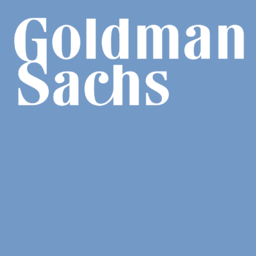
P/E ratio for Goldman Sachs (GS)
P/E ratio as of April 2024 (TTM): 20.4
According to Goldman Sachs's latest financial reports and stock price the company's current price-to-earnings ratio (TTM) is 20.3752. At the end of 2022 the company had a P/E ratio of 11.3.
P/E ratio history for Goldman Sachs from 2001 to 2023
PE ratio at the end of each year
| Year | P/E ratio | Change |
|---|---|---|
| 2022 | 11.3 | 77.63% |
| 2021 | 6.36 | -24.21% |
| 2020 | 8.40 | -22.74% |
| 2019 | 10.9 | 66% |
| 2018 | 6.55 | -77.36% |
| 2017 | 28.9 | 100.59% |
| 2016 | 14.4 | -1.7% |
| 2015 | 14.7 | 32.78% |
| 2014 | 11.0 | 1.68% |
| 2013 | 10.9 | 25.17% |
| 2012 | 8.68 | -55% |
| 2011 | 19.3 | 62.02% |
| 2010 | 11.9 | 65.64% |
| 2009 | 7.18 | -56.5% |
| 2008 | 16.5 | 102.12% |
| 2007 | 8.17 | -14.3% |
| 2006 | 9.53 | -12.36% |
| 2005 | 10.9 | -2.76% |
| 2004 | 11.2 | -30.31% |
| 2003 | 16.1 | 0.42% |
| 2002 | 16.0 | -22.1% |
| 2001 | 20.5 |
P/E ratio for similar companies or competitors
| Company | P/E ratio | P/E ratio differencediff. | Country |
|---|---|---|---|
 Bank of America BAC | 10.6 | -48.09% | 🇺🇸 USA |
 JPMorgan Chase JPM | 11.5 | -43.38% | 🇺🇸 USA |
 Citigroup C | 9.04 | -55.65% | 🇺🇸 USA |
 Morgan Stanley MS | 16.5 | -19.25% | 🇺🇸 USA |
 Deutsche Bank DB | 6.74 | -66.90% | 🇩🇪 Germany |
 UBS UBS | 2.54 | -87.54% | 🇨🇭 Switzerland |
 Credit Suisse CS | -0.3304 | -101.62% | 🇨🇭 Switzerland |
 Barclays BCS | 5.99 | -70.60% | 🇬🇧 UK |
How to read a P/E ratio?
The Price/Earnings ratio measures the relationship between a company's stock price and its earnings per share. A low but positive P/E ratio stands for a company that is generating high earnings compared to its current valuation and might be undervalued. A company with a high negative (near 0) P/E ratio stands for a company that is generating heavy losses compared to its current valuation.
Companies with a P/E ratio over 30 or a negative one are generaly seen as "growth stocks" meaning that investors typically expect the company to grow or to become profitable in the future.
Companies with a positive P/E ratio bellow 10 are generally seen as "value stocks" meaning that the company is already very profitable and unlikely to strong growth in the future.